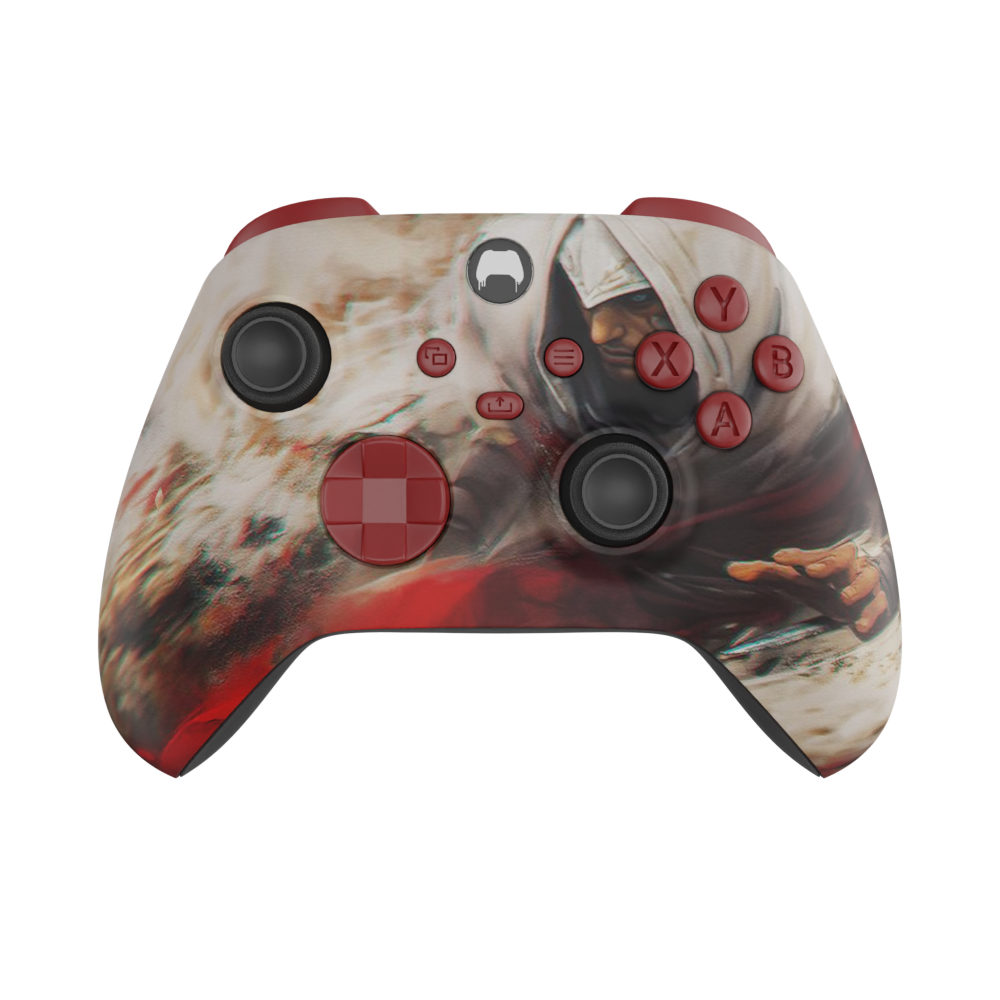Plague Tale Requiem has been out for nearly a week now. Following on from the dark tale that was Plague Tale Innocence, this game has a lot to live up to. But does it?
Before I get into the review, I was to quickly give my thoughts on the first game. A Plague Tale Innocence threw us into a brutal and plague-ridden world from the perspective of two children who had lost everything. And the narrative did extremely well to display the desperation of the protagonists. It was simply a great game and set my expectations quite high for Plague Tale Requiem.
Frame Rate Cap
I want to start my review with what most people will see as the weakest part of the game, and that is the performance. And more specifically, the fact that the game is capped at 30fps. When it comes to next-generation gameplay, capping the frame rate at this is quite negative. The reason why is a completely different topic altogether and subject to a variety of games (like the upcoming Gotham Knights), and I will leave it for another time.
But, through the runtime of the game, I did not feel that the capped 30fps impacted the game massively. I still felt the game ran quite smoothly and was relatively quick. The main issue that flagged up for me is frame rate drops. This happened quite commonly while in encounters that were filled with rats. Which, as you can expect, is quite regular throughout the game. And the frame rate drops from 30fps aren’t pretty. Not something you’d think you would get on a next-gen console. The best way I found to resolve this was to simply look away from them. And before you think of it, I was not looking away from the rats because I was afraid.
Graphical Beauty
Where the game suffers slightly in performance, it makes up with its graphics. Plague Tale Requiem looks stunning. There’s a good mix of bright and vivid locations and scenery that look brilliant and dark and grim sections that too are exceptional. Graphically, the game is just amazing and a real step up from the first game.
Approaching Encounters
Plague Tale Requiem also introduces a few changes to its gameplay. Mainly in the way that you can approach an encounter and enemies. In Plague Tale Innocence, you had to stick to your stealth approaches. And getting face to face with a soldier almost always resulted in your downfall. In Plague Tale Requiem, this is no longer truly the case. It is now a lot easier and more viable to get face-to-face with soldiers without being killed. This is all thanks to a variety of new tools, including a crossbow and a variety of throwable techniques.
Tools and Alchemy
It's also worth mentioning that a few of the alchemy/weapons that were in the first game are not in the sequel. Like Somnum (would put enemies to sleep) and Devorantis (would force soldiers to remove their helmets). But the introduction of the knife and crossbow are good upgrades on these. Them being far more viable as they offer more of an instant solution, rather than having to switch between items to finish off an opponent.
But the types of throwables and weapons that are changed and introduced with Plague Tale Requiem aren’t the only things to be improved. Crafting in the first game was quite expensive, and the variety in which you could use each projectile was quite limited. But in Requiem, this sees a neat upgrade. Rather than having lots of projectiles that you must craft each of, instead, you have 4 items, and they can all be equipped with the same transferrable throwables.
I understand that may not be the best explanation but let me give you an example. You have the sling, pots, crossbow, and hand throw as your main four items. And each item can be equipped with ignifer, extinguis, tar and odoris. Each also has normal projectiles like rocks or arrows, but obviously, these are only applicable to their specific item. And once you have crafted a projectile, it is available to use on any of those items. You don’t have to craft that projectile for each item, but rather one projectile for all items.
For example, if you craft an ignifer, you can use it in a pot, crossbow, or sling. Which I think is a great change and offers a lot of variety. You can throw a pot with an ignifer that will cast a large pool of fire. Or put an odoris onto a crossbow bolt and fire it at a plank of wood to distract rats. Or even combine two different projectiles to make something deadly, like throwing a pot of tar and setting it alight with an ignifer. Which is a huge upgrade to the first game where you had multiple throwables that all served their specific purpose. Fewer items that serve multiple purposes are a far greater option, and it works well in this game.
Rat Control
Players of the first game may also be wondering, can Hugo still control the rats? I am going to tread lightly here as this does tie into this story and I don’t want to spoil anything. Yes, this ability is still in the game and has been improved slightly. The first notable change that I think is good is that rats can now climb textured surfaces, rather than having to run up or around to reach targets. Which makes using the ability a lot easier. But there is also a new ability where Hugo can use the rats to identify enemy locations.
This all ties into a new stress mechanic as well. If Hugo uses the rats too much, he will grow distressed. But I don’t know what happens in this case because I never found myself reaching that point. This is mostly because the opportunity to use the rats in level encounters isn’t super common. And when I was using it, it was in very short bursts due to how powerful this ability is.
Not only that, but you also must be quite strategic with it as many soldiers will have torches to repel the rats. So more than often I was having to back out of the ability to take out the torches, and then the rats would automatically go for the enemy, or I would finish them off normally as it would be easier. It isn’t a complaint, as that strategic aspect is quite good and at points puts you on your toes. But the ability to control the rats felt more like an option to use at limited points if you wanted, rather than an ability I had to use to make it through an encounter. There are parts where you have to use this ability, but you don't have the option to do it another way here.
Slow Soldiers
Unlike the first game, rather than a large focus on stealth, the game gives you enough options to make combat an easier option. Of course, we have mentioned the crossbow and knife, which both act as instant solutions to dealing with enemies. But the combat becomes quite an effective option, seeing as how slow the soldiers can be.
The only soldiers I tend to find myself having a problem with were ranged soldiers. As they have a very good aim, and always keep their distance. But with armoured soldiers, they never really became much of an issue as they are supposed to be. The main reason why is that they never run at you, they always walk. Meaning you can just keep moving and stunning them and get the upper hand very easily. And the tools you have available are always very effective at stopping them. The speed of the soldiers is so slow, that in some encounters all I had to do was take down one enemy and just run to the end of the area. And that was it. It hardly felt challenging to take them on directly or quickly avoid them.
Stealth is still also a very viable option, as there is plenty of cover and the soldiers rarely spot you in it. They can spot you if they come up to the cover and you are right in front of them. But this is very rare. And you can still very easily slowly move around them.
Getting caught by a soldier isn’t very punishing either, as they don’t one-hit you. Apart from the fully armoured soldiers, they can. But in most cases, they will knock you down and you get back up and counter and stun them, move away, and take them down. The soldiers overall just felt very easy to overcome and didn’t offer much of a challenge.
Skill Progression
You have the option to take stealth or combat as you choose. But taking these options differently will help you progress your skills. This is a new feature, that gives you bonuses based on how you play. For example, if you choose stealth and take opportunities as they arise, you will be given benefits like faster crafting speeds or the ability to throw objects further. Or if you choose combat, you will get benefits like being able to stun enemies for longer durations.
I didn’t manage to get all the upgrades/skills in my first run of the story as I played quite a mix of stealth and combat. Using one or the other when I needed to rather than when I wanted. And this resulted in quite an even split among the skills. And this is a neat upgrade system. Automatically rewarding you for how you play rather than how many points you can spend.
The upgrade system for gear is fine. Mostly involving gathering components and tools along the road to upgrade your sling, crossbow, crafting, etc. I mostly found that I was getting enough tools for upgrades, but the components/parts were quite scarce when you see how many you need for upgrades. Making the parts a bit more common or giving you higher amounts would be an improvement, but you will struggle to get all upgrades in one run of the whole story.
Story
That’s all I have to say about the gameplay. Now onto the main part of the game, the story. No spoilers, of course. The standout of the first game was its brutal story, setting high expectations for the second. And by the end, I was not disappointed, but it doesn’t massively surpass the first. It tells a gripping story, but there are a few complaints I have.
You truly get to feel for the characters and what they are going through. Feeling the hope that they can find a solution. Feeling frustrated when you’re being held back and slowed down. And feeling upset when the ground around them starts to collapse again. The two main protagonists are very well done and deliver a very strong performance.
And along with the main characters, there are several side characters you get to spend time with. Of course, there is Lucas who remains from the first game, along with the main character’s mother. And two other new characters Sophia and Arnaud. This is where my first main complaint about the story comes in: you don’t get to spend much time with most of these characters. And without the time to build up these characters, you don’t feel as much for them as it feels intended. I don’t want to get into spoilers, so it is a bit difficult to explain. But when certain events do happen, they don’t feel at impactful as they’re meant to be.
The main antagonist is also a bit underwhelming, mainly because he doesn’t feel like a massive threat (again no spoilers so it is a bit difficult to explain exactly what I mean, so I will be vague). He only really gets in your way once or twice and it is a bit of a struggle to understand why he did the things he did when you discover his motive. But it does feel like this is somewhat intentional. And my reasoning behind this is that the story focuses more on the Macula and what is happening to Hugo as more of the main threat, and this antagonist is more of a nuisance who is getting in the way.
Most of the game is just spent playing from the perspective of Amicia and Hugo. And the events you witness and the story that builds all around is very good. I wish their relationships with other characters were explored a little more to make some events more impactful. But the events you experience are all so expertly told and shown. And it truly grips you the more and more you get into the game.
Between the first game and the second, I feel the first has the more impactful selection of characters that you feel connected to and enemies who act as a major threat throughout the whole game. But the second has the advantage when it comes to truly feeling how the two main characters feel, along with a greater sense of dread that continues to build as you make your way through the game.
Overall
A Plague Tale Requiem is a strong sequel to the first and offers a strong and emotional narrative. And though it succeeds in offering more combat-based situations, a variety of viable approaches, very strong graphics and building on systems introduced in the first game, there are a few downsides. Not only is the capped 30fps a disappointing level for next-generation gaming, but the main enemies you face feel weak and easy to overcome.
Overall, I am going to give A Plague Tale Requiem an 8/10. It’s great, and if you haven’t played the series before I recommend playing both Plague Tale Innocence and Plague Tale Requiem.









Leave a comment
All comments are moderated before being published.
This site is protected by hCaptcha and the hCaptcha Privacy Policy and Terms of Service apply.